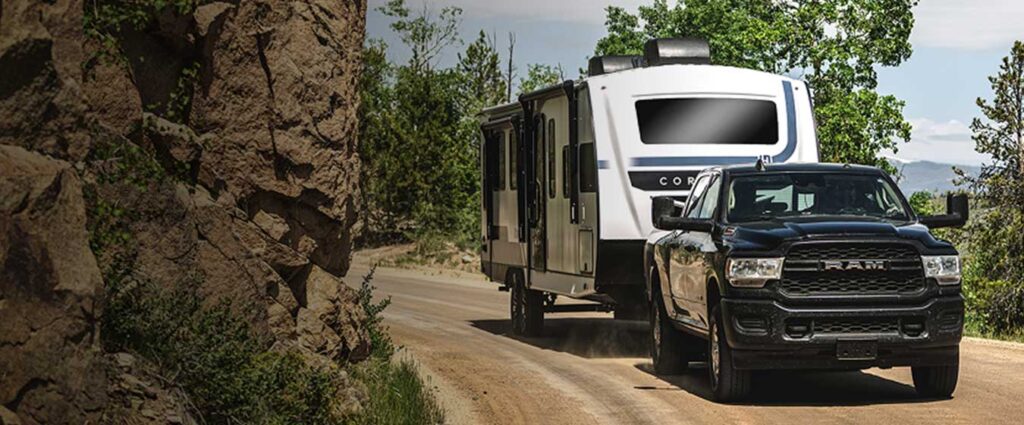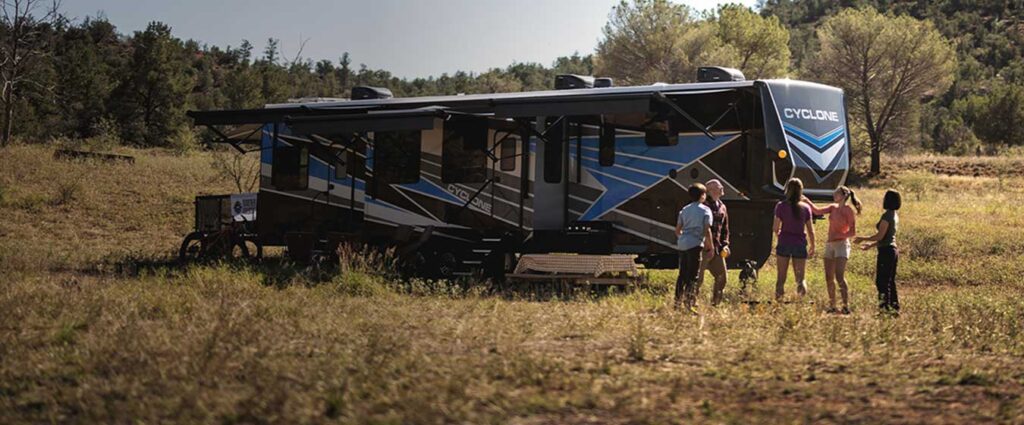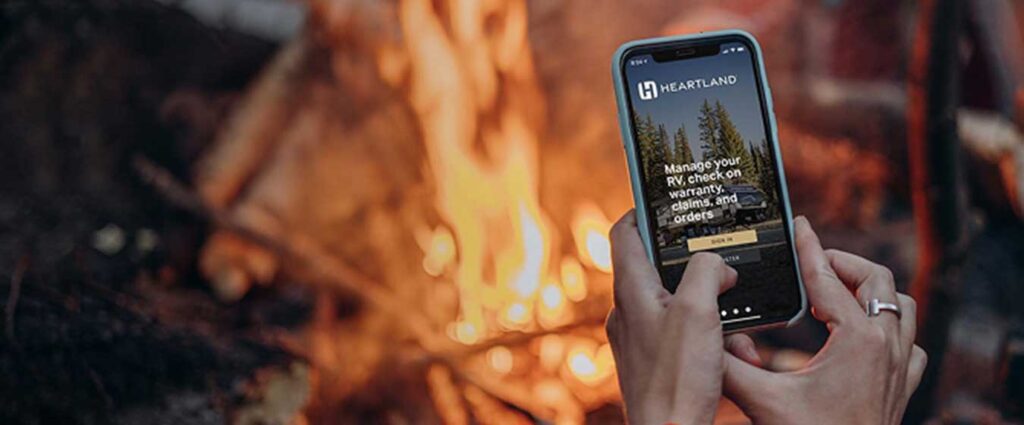“It’s travel day!” These three words bring a lot of excitement but also require a lot of prep and planning. Our family of five has traveled full-time in our Heartland Bighorn Traveler for almost two years, and we’ve learned a lot when it comes to packing up and moving locations. Travel days are now a lot easier for us! Over the years we’ve found plenty of resources that can help make your RV trips even better. So, here are our tips for planning a successful travel day and maximizing efficiency on your next RV road trip.
Download a Route Planning App
The night before a travel day, we plan our driving route so we aren’t hitting the road blindly. One of our favorite apps is called RV Parky. This app not only allows a user to plot a route but it also shows areas and roads to avoid due to low clearance or narrow passages. Low clearance is always something to be aware of, especially if you have a taller RV like we do. Knowing the height of your RV (including any air conditioners, solar panels or roof racks) is essential for safe and successful travel days.
Route planning apps can also help find places to stop along the way, including gas stations, restaurants, lodging, even businesses that allow overnight parking. If the app has user reviews, be sure and read those and check out any pictures to make sure you feel comfortable with the locations.
Look for Truck Stops
Our fifth wheel is 43 feet long and we tow it with a Ford F350 dually. So in total, we’re about 64 feet long when we roll down the highway. That makes our turning radius fairly wide, which can get tricky when we stop for gas. If you have a longer RV, or want a little more space, then we recommend looking for truck stops. Trucks stops are specifically built for big rigs and wide turns, and they almost always offer diesel. While the price per gallon on diesel might be slightly more expensive at a truck stop compared to other gas stations, we’ve found there are other benefits that help outweigh this cost.
First, truck stops often have extra large parking spaces, which allow us to pull over and use our own bathrooms. We can also open up the rig and make a quick lunch while we’re parked. Making our own lunches saves us money and can help compensate for the extra money we may have spent on gas. Another benefit of truck stops is that we’re able to let our dog out for a quick stretch. Some bigger truck stops even have dog parks, which are great for letting your dog burn off some energy before hitting the road again.
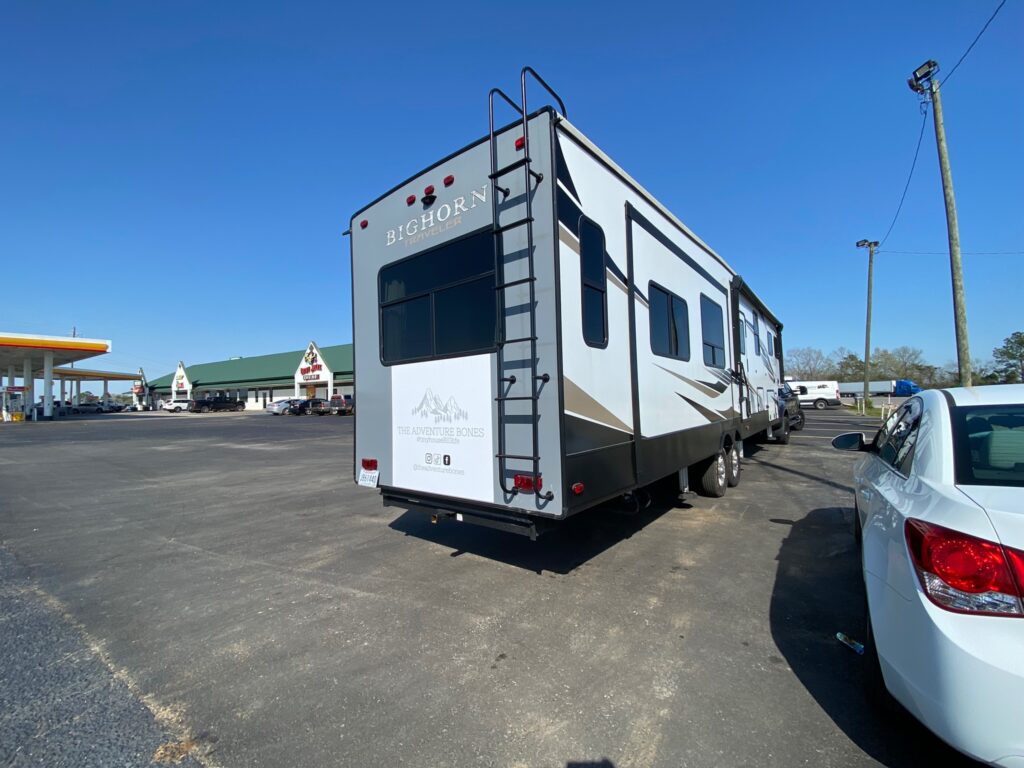
If You Leave Later, Plan to Stop Overnight
On travel days, we try to leave earlier in the morning to avoid driving at night. However, there are times when we have to work late and are unable to hit the road until later in the day. When this happens, I try to have everything packed and ready to go so we can leave as soon as we’re done. We’ll drive for a few hours and then stop at a Walmart or Cracker Barrell for the night. We’ve found this to be better than driving through the night or having one extra long travel day. Always call the business before you stop to make sure they actually allow overnight parking. While it’s not always necessary, we also like to purchase something from the business as a thank you for allowing us to utilize their parking lot for the night.
Be Mindful of Your Mileage
When we first started RVing, we wanted to travel as many miles as possible in a day to maximize our time. We quickly learned that this wore us down, both physically and mentally. This caused us to put way more wear and tear on our RV and tow vehicle, and even dealt with a few tire blowouts.
We decided to start breaking up our drives and enjoy the experience of slower travel. Our RV family has found that if we travel 250-350 miles per day (roughly five hours), then we enjoy the experience a lot more. If our destination is 500-700 miles away, we’ll break that up into two travel days. On the first travel day, we’ll have a later start and drive less.
Then, on day two, we like to wake up early and hit the road right away. This allows the kids to sleep in the car and we can arrive at our destination with plenty of daylight.

The unexpected can always happen on the road. Make sure you’re planning for that and leave a bit of extra time in your schedule to deal with anything that may come up.
At the end of the day, no matter how much you plan and map everything out, things happen. Blowouts, getting stuck in traffic and mechanical issues are all things that have interrupted our travel days. However, we choose to not let those inconveniences put a damper on our day, we learn from them and do our best to smile through the issues. Just remember, the most important thing is getting there safely.
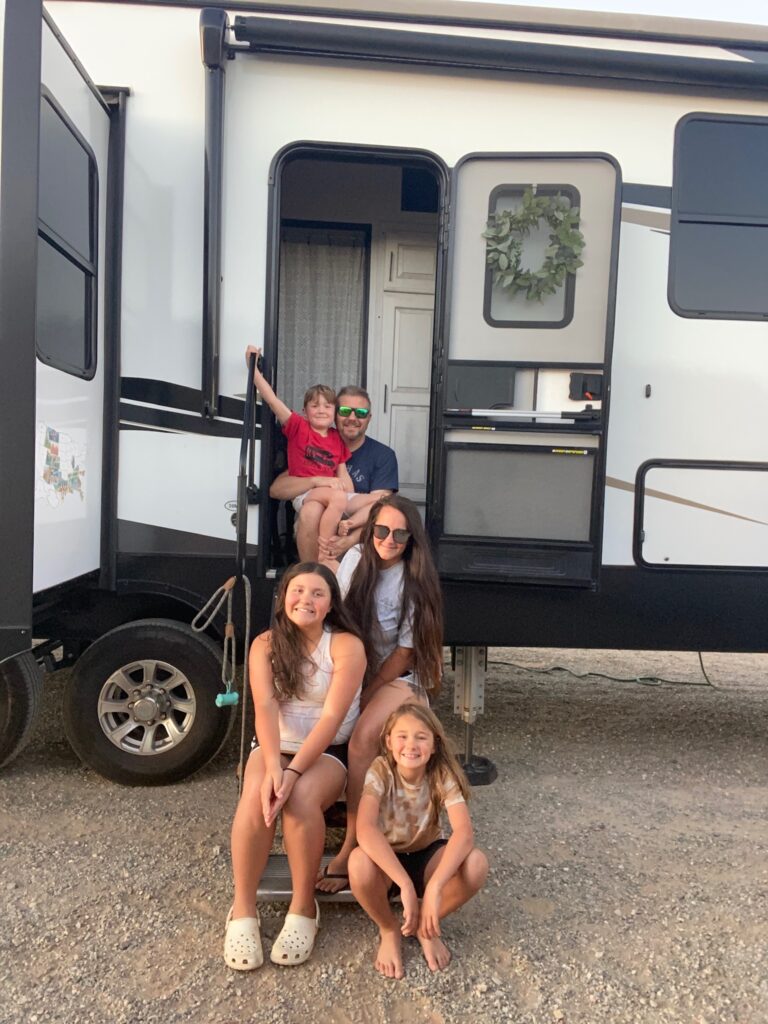
Our general travel rule is: If we travel 250-350 miles per day (roughly five hours), then we enjoy the experience a lot more. If our destination is 500-700 miles away, we’ll break that up into two travel days. On the first travel day, we’ll have a later start and drive less.
Darren and Amanda have been living and traveling in their Heartland Bighorn Traveler 39MB fifth wheel since June of 2021. They homeschool their three children Allianna, Dallas and Dawson, and thoroughly enjoy being able to show them the lessons they learn about in their textbooks. When they’re not homeschooling or working, you can find them chasing waterfalls in Tennessee and visiting family in Louisiana.
Original article written by Thor Industries and can be found here.
